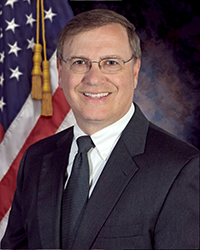 This week DEA Chief Chuck Rosenberg issued a statement to reporters concerning marijuana, saying,
This week DEA Chief Chuck Rosenberg issued a statement to reporters concerning marijuana, saying,
“What really bothers me is the notion that marijuana is also medicinal — because it’s not. We can have an intellectually honest debate about whether we should legalize something that is bad and dangerous, but don’t call it medicine — that is a joke.”
Rosenberg noted certain substances in the marijuana plant might have possible medical use, but dismissed the idea that the marijuana plant itself can be smoked safely–a position we have supported at Family Council.
Rosenberg said, “But if you talk about smoking the leaf of marijuana — which is what people are talking about when they talk about medicinal marijuana — it has never been shown to be safe or effective as a medicine.”
Last month the DEA issued a report citing concerns over illicit drugs, writing,
“While marijuana is the most widely available and commonly used illicit drug and remains illegal under federal law, many states have passed legislation approving the cultivation, possession, and use of the drug within their respective states. Marijuana concentrates, with potency levels far exceeding those of leaf marijuana, pose an issue of growing concern. . . .
“The disparity between federal law and state laws authorizing the use of ‘medical’ or ‘retail’ marijuana poses a challenge for federal, state, local, and tribal law enforcement efforts given the different regulatory regimes at the state level. Likewise, the increased production and use of marijuana in those states with medical or retail marijuana laws is adversely affecting states in which marijuana remains an illegal substance.”
The DEA report also cites the danger posed by marijuana extracts–in particular the method marijuana users often employ to extract marijuana’s potent oils.
“Marijuana concentrates such as hashish, hash oil, and keif have been used for centuries; however, marijuana concentrates are gaining popularity in the United States, as indicated by the increasing volume of law enforcement and open source reporting. Marijuana concentrates are extracted from leafy marijuana in many ways, but the most frequently used, and potentially most dangerous, method is butane extraction. The butane extraction method uses highly flammable butane gas and has resulted in numerous explosions and injuries, particularly on the West Coast, where production is most common. The first DEA reporting of the THC extraction process using butane was in 2005 in Oakland, California. However, as the use of marijuana concentrates has increased, the number of laboratory-related explosions has also increased.”
We have written repeatedly about the danger posed by butane hash oil extraction. Many individuals have been killed or injured as a result of butane gases used to extract hash oil from marijuana igniting, causing fires and explosions.
The DEA also cites rising levels of THC–marijuana’s primary active ingredient–in marijuana seized by law enforcement, and notes that marijuana concentrates are significantly more potent than traditional marijuana. The DEA report notes,
“The average THC content of seized marijuana continues to increase. In 1995, the average THC potency of traditional leafy marijuana seizures was around 4 percent; the average THC potency was 12.05 percent in 2013. Partial year data for 2014 indicate the average THC potency in 2014 (11.80%) was consistent with 2013. The highest level of THC tested for traditional marijuana by the University of Mississippi’s Potency Monitoring Program (PMP) was 37 percent. The average THC content of marijuana concentrate seizures, referred to as ‘hash-oil,’ has also increased significantly. In 1995, the average THC of “hash-oil” was 13.23 percent; in 2013, the average THC potency of ‘hash-oil’ was 52.32 percent, with some seizures testing above 80 percent. Again, partial year data indicate potency levels for 2014 (52.18%) were similar to 2013. The average marijuana concentrate/hash oil is over four times more potent than the average traditional leaf marijuana.” (Emphasis Added)
These findings from the DEA verify much of what we already know about marijuana and marijuana concentrates. As we have written in the past,
- Some of today’s products laced with marijuana concentrates have 400 percent greater potency than marijuana joints sold 30 years ago.
- Marijuana concentrate is available in forms that appeal to children, including lollipops, gummies, cherry drops, brownies, chocolates, cookies, fruit punches, and sodas.
- In Colorado, marijuana use by kids between the ages of 12 and 17 is now 58 percent higher than the national average.
- The rate of use among college-age adults in Colorado is 54 percent above the national average.
- Children and adults often mistake marijuana edibles for traditional candy.
- Emergency rooms are seeing more cases of children accidentally ingesting marijuana.
- Marijuana is increasingly linked with schizophrenia and other mental problems.
- According to the National Institutes of Health, “Marijuana is the illicit drug most frequently found in the blood of drivers who have been involved in accidents, including fatal ones,” and a study published by the University of Colorado School of Medicine found that “the proportion of marijuana-positive drivers involved in fatal motor vehicle crashes in Colorado has increased dramatically since the commercialization of medical marijuana in the middle of 2009.”
We keep saying it: Marijuana may be many things, but “harmless” simply is not one of them.



